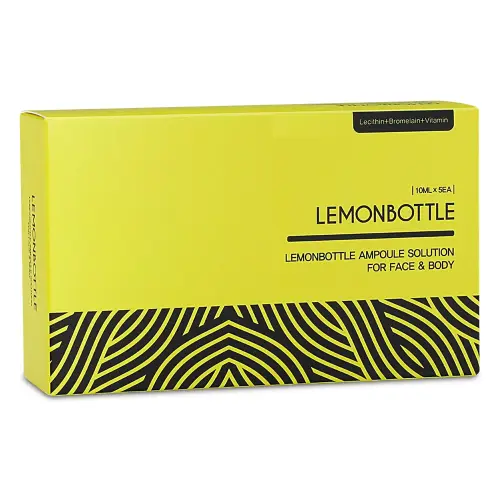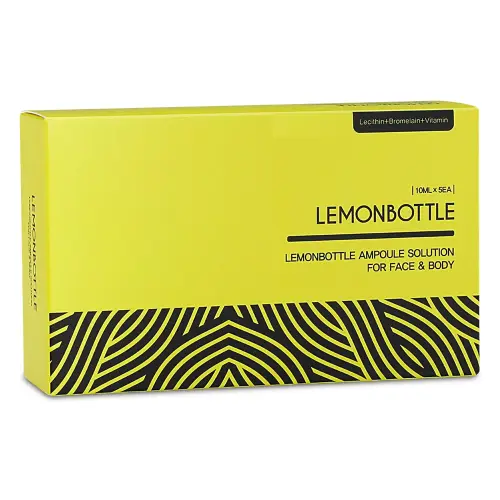Weight Loss Injection and Injectable Lipolysis
Introduction to Weight Loss Injections
In recent years, weight loss injections have emerged as popular alternatives to traditional surgical procedures for fat reduction. These treatments offer less invasive options for those looking to reduce stubborn fat deposits that don’t respond to diet and exercise. Among these options, injectable lipolysis stands out as a targeted approach for reducing localized fat pockets.
Weight loss injections encompass a variety of treatments, from fat-dissolving injectables to hormone-based injections designed to boost metabolism or suppress appetite. These treatments have gained popularity due to their convenience, reduced downtime, and promising results for specific body areas.
What is Injectable Lipolysis?
Injectable lipolysis (literally “fat breakdown”) is a nonsurgical cosmetic procedure that involves administering a series of injections under the skin to break down fat cells in targeted areas. The procedure “chemically reduces the number of fat cells around the injection site” using compounds that disrupt fat cell membranes.
Unlike liposuction, which physically removes fat cells through suction, injectable lipolysis works by breaking down fat cells so they can be processed and eliminated by the body’s natural metabolic pathways. The procedure is minimally invasive, requiring only small injections rather than surgical incisions, and typically results in minimal downtime.
The Science Behind Injectable Lipolysis
Chemical Composition and Function
The most common compounds used in injectable lipolysis are:
- Deoxycholic Acid: This is the active ingredient in Kybella, the first FDA-approved injectable treatment specifically for submental fat (double chin). Deoxycholic acid is a naturally occurring bile salt that aids in the breakdown and absorption of dietary fat. When injected into subcutaneous fat, it disrupts the fat cell membrane, causing the cell to rupture and release its contents.
- Phosphatidylcholine and Deoxycholate (PC-DC): This combination has been used extensively in injectable lipolysis. Phosphatidylcholine is a phospholipid that helps make fat soluble in water, while deoxycholate acts as a detergent to dissolve fat cell membranes. These compounds work synergistically – when injected into the fat layer, they cause vacuolization of adipocytes (fat cells) leading to their destruction, which are then cleared by phagocytosis (a process where cells engulf and digest particles).
The mechanism of action for injectable lipolysis generally follows these steps:
- The solution is injected directly into the subcutaneous fat through multiple microinjections.
- The active compounds disrupt the cell membranes of adipocytes (fat cells).
- The damaged cells undergo cell death (necrosis or apoptosis).
- The body’s inflammatory response clears away the damaged cells.
- The released fat content is processed by the liver and eliminated through normal metabolic pathways.
Research indicates that the primary mode of action in injection lipolysis is cytolysis – the breaking down of cells. Studies have shown that the reduction of fat pad size occurs through cell and tissue destruction.
Benefits of Weight Loss Injections
Targeted Fat Reduction
One of the primary advantages of injectable lipolysis is its ability to target specific problem areas. Unlike diet and exercise, which reduce fat throughout the body but can’t target specific areas, injectable lipolysis allows for precision treatment of stubborn fat deposits.
These treatments are particularly effective for small, localized fat pockets that have been resistant to other weight loss methods. Medical consensus indicates that “the primary indication for the use of injection lipolysis is the reduction in size of small localized fat pads,” with soft fat responding better than firm, fibrous fat.
Common treatment areas include:
- Submental area (double chin)
- Jowls and jawline
- Upper arms
- Abdomen
- Flanks (“love handles”)
- Thighs
- Knees
Non-Invasive Body Contouring
Injectable lipolysis offers several advantages over surgical fat reduction methods:
- Minimal Downtime: Unlike surgical procedures that may require weeks of recovery, most patients can return to normal activities within days after injectable lipolysis.
- No General Anesthesia: The procedure is typically performed using only local anesthesia, reducing risks associated with general anesthesia.
- No Incisions: Since the treatment uses only injections, there are no surgical incisions, resulting in minimal scarring.
- Gradual, Natural-Looking Results: The fat reduction occurs gradually as the body processes the damaged fat cells, leading to results that appear natural.
- Potential Skin Tightening: Some patients experience mild skin tightening effects along with fat reduction, though this varies depending on skin elasticity and the specific treatment used.
Potential Risks and Side Effects
Like all medical procedures, injectable lipolysis carries certain risks and potential side effects:
Common Side Effects:
- Swelling and bruising at injection sites
- Temporary redness and tenderness
- Lumps or nodules in the treated area (usually temporary)
- Mild pain or discomfort
- Numbness in the treated area
Less Common but More Serious Risks:
- Infection at the injection site
- Uneven fat reduction leading to asymmetry
- Skin necrosis (death of skin cells)
- Nerve injury resulting in temporary or permanent numbness
- Allergic reactions to the injectable compounds
In rare instances, particularly with treatments in the submental area, patients have reported difficulty swallowing or nerve injury that can result in an uneven smile.
It’s important to note that these more serious complications are rare when the procedure is performed by a qualified medical professional.
Comparing Injectable Lipolysis with Other Weight Loss Methods
Surgical Options vs. Non-Surgical Options
Injectable Lipolysis vs. Liposuction:
While both procedures aim to reduce localized fat, they differ significantly:
- Invasiveness: Liposuction is a surgical procedure requiring incisions and a cannula to physically remove fat cells. Injectable lipolysis uses only injections to chemically break down fat.
- Anesthesia: Liposuction typically requires general anesthesia or heavy sedation, while injectable lipolysis can be performed under local anesthesia.
- Recovery Time: Liposuction recovery can take weeks, with significant bruising and swelling. Injectable lipolysis typically has much shorter downtime, with most patients resuming normal activities within days.
- Results: Liposuction can remove larger volumes of fat in a single session. Injectable lipolysis is better suited for smaller, targeted areas and may require multiple sessions.
- Risks: Liposuction carries surgical risks including infection, blood clots, and complications from anesthesia. Injectable lipolysis has fewer serious risks but can cause temporary swelling, bruising, and discomfort.
Injectable Lipolysis vs. Non-Invasive Fat Reduction (CoolSculpting, etc.):
Several non-invasive fat reduction methods have emerged as alternatives to both liposuction and injectable lipolysis:
- CoolSculpting (Cryolipolysis): This non-invasive procedure uses controlled cooling to freeze and eliminate fat cells. Unlike injectable lipolysis which requires injections, CoolSculpting is completely non-invasive, though it may take longer to see results.
- SculpSure/Laser Lipo: These treatments use laser energy to heat and destroy fat cells. Compared to injectable lipolysis, they are typically less invasive but may require more sessions for comparable results.
- Ultrasound Fat Reduction: Uses focused ultrasound energy to disrupt fat cells. This non-invasive option may be less effective than injectable lipolysis for certain areas.
Some practitioners have noted that cryolipolysis (CoolSculpting) can sometimes work better than injectable lipolysis, though this depends on the specific treatment area and patient characteristics.
Diet and Exercise: An Essential Complement
It’s crucial to understand that injectable lipolysis and other fat reduction methods are not weight loss solutions but rather body contouring procedures. They work best when combined with healthy lifestyle habits:
- Maintaining Results: Weight gain after treatment can lead to enlargement of remaining fat cells, potentially diminishing results. A balanced diet and regular exercise help maintain results long-term.
- Optimizing Outcomes: Patients who combine injectable lipolysis with healthy eating and regular physical activity typically see better overall results.
- Patient Selection: Most Doctors don’t recommend injectable lipolysis for higher weight patients or those seeking significant weight loss. These procedures are designed for individuals who are at or near their ideal weight but struggle with stubborn fat deposits.
Conclusion and Future of Weight Loss Injections
Injectable lipolysis represents an exciting middle ground between invasive surgical procedures and completely non-invasive treatments. For the right candidates—those with small, stubborn fat deposits who are at a healthy weight—these injections can provide satisfying, targeted fat reduction with relatively minimal downtime.
As research continues and techniques evolve, we can expect to see refinements in injectable formulations, administration methods, and combination protocols that may further improve results and reduce side effects.
The future of injectable lipolysis may include:
- New Formulations: Development of more effective and targeted compounds with fewer side effects.
- Combination Therapies: Protocols that combine injectable lipolysis with other treatments like radiofrequency skin tightening to address both fat and skin laxity.
- Expanded Applications: FDA approval for treatment areas beyond the submental region.
- Improved Techniques: Refinement of injection methods to enhance results and reduce discomfort.
When considering injectable lipolysis or any weight loss injection, it’s essential to:
- Work with a qualified provider with specific training in these procedures
- Have realistic expectations about results
- Understand that multiple treatment sessions may be necessary
- Commit to maintaining results through healthy lifestyle habits
With proper patient selection, technique, and aftercare, injectable lipolysis can be an effective tool in the body contouring arsenal, offering patients a middle ground between more invasive surgical options and less effective topical treatments.
-


Buy Yellowshot Slimming Solution 10ml x 5 vials online
€ 185.00€ 190.00 -


Deso Love Cosmedical Face 5x10ml
€ 165.00€ 171.00 -


Lemon Bottle Ampoule Solution For Face & Body 10ml x 5ea
€ 105.00€ 110.00